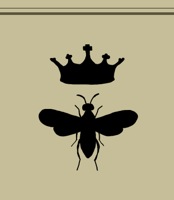Difference between revisions of "Supersedure"
(Created page with 'File:lighterstill.jpgright|frame *[http://en.wikipedia.org/wiki/18th_century 1788] ==Definition== *1:the act or process of superseding; espe...') |
m (Text replacement - "http://" to "https://") |
||
| Line 1: | Line 1: | ||
[[File:lighterstill.jpg]][[File:Supersedure.jpg|right|frame]] | [[File:lighterstill.jpg]][[File:Supersedure.jpg|right|frame]] | ||
| − | *[ | + | *[https://en.wikipedia.org/wiki/18th_century 1788] |
==Definition== | ==Definition== | ||
| − | *1:the [[act]] or [[process]] of superseding; especially : the replacement of an old or inferior [ | + | *1:the [[act]] or [[process]] of superseding; especially : the replacement of an old or inferior [https://en.wikipedia.org/wiki/Queen_bee queen bee] by a young or superior queen |
==Description== | ==Description== | ||
| − | As the [ | + | As the [https://en.wikipedia.org/wiki/Queen_bee queen ages] her [https://en.wikipedia.org/wiki/Pheromone_(honey_bee) pheromone] output diminishes. A queen bee that [[becomes]] old, or is diseased or failing, will be replaced by the workers in a [[procedure]] known as "'''supersedure'''". |
Supersedure may be forced by a beekeeper, for example by clipping off one of the queen's middle or posterior legs. This makes her unable to properly place her eggs at the bottom of the brood cell; the workers will detect this and will then rear replacement queens. When a new queen becomes available, the workers will kill the reigning queen by "balling" her, clustering tightly around her and stinging her. Balling is often a [[problem]] for beekeepers attempting to introduce a replacement queen. | Supersedure may be forced by a beekeeper, for example by clipping off one of the queen's middle or posterior legs. This makes her unable to properly place her eggs at the bottom of the brood cell; the workers will detect this and will then rear replacement queens. When a new queen becomes available, the workers will kill the reigning queen by "balling" her, clustering tightly around her and stinging her. Balling is often a [[problem]] for beekeepers attempting to introduce a replacement queen. | ||
| − | If a queen suddenly dies, the workers will flood with [ | + | If a queen suddenly dies, the workers will flood with [https://en.wikipedia.org/wiki/Royal_jelly royal jelly] several cells where a larva has just emerged. The young [[larva]] floats on the royal jelly; the worker bees then build a larger queen cell from the normal-sized worker cell, which will protrude vertically from the face of the brood comb. [[Emergency]] queens are usually smaller and less prolific, and therefore not preferred by beekeepers.[https://en.wikipedia.org/wiki/Supercedure#Supersedure] |
[[Category: Biology]] | [[Category: Biology]] | ||
Latest revision as of 02:31, 13 December 2020
Definition
- 1:the act or process of superseding; especially : the replacement of an old or inferior queen bee by a young or superior queen
Description
As the queen ages her pheromone output diminishes. A queen bee that becomes old, or is diseased or failing, will be replaced by the workers in a procedure known as "supersedure".
Supersedure may be forced by a beekeeper, for example by clipping off one of the queen's middle or posterior legs. This makes her unable to properly place her eggs at the bottom of the brood cell; the workers will detect this and will then rear replacement queens. When a new queen becomes available, the workers will kill the reigning queen by "balling" her, clustering tightly around her and stinging her. Balling is often a problem for beekeepers attempting to introduce a replacement queen.
If a queen suddenly dies, the workers will flood with royal jelly several cells where a larva has just emerged. The young larva floats on the royal jelly; the worker bees then build a larger queen cell from the normal-sized worker cell, which will protrude vertically from the face of the brood comb. Emergency queens are usually smaller and less prolific, and therefore not preferred by beekeepers.[1]
